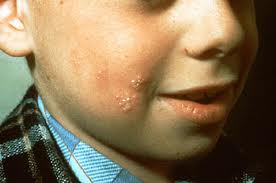It is truly very difficult to accept that one infant of 3,200 births is infected with neonatal HSV (herpes simplex virus). This condition causes severe morbidity and inevitable mortality. If it does leave survivors, they are left with sequelae that is permanent. Imagine the challenges that both the infant and the mother face as the disease progresses.
Treating neonatal herpes simplex virus infection can be a very tedious and complicated task. The following are some of the important details with regard to the treatment of neonatal herpes simplex virus infection  that you may want to discuss with your doctor:
1. Support
 As supportive measures for neonatal herpes simplex virus infection  treatment, there should be correction of electrolyte imbalances, correction of hypoglycemia, maintenance of fluids, shock management, disseminated intravascular coagulation management, nutritional support, providing ventilation support, treatment for bacterial infections, and seizure control.
As supportive measures for neonatal herpes simplex virus infection  treatment, there should be correction of electrolyte imbalances, correction of hypoglycemia, maintenance of fluids, shock management, disseminated intravascular coagulation management, nutritional support, providing ventilation support, treatment for bacterial infections, and seizure control.
2. Acyclovir
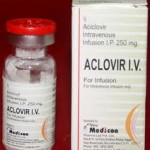 This is an effective antiviral treatment for neonatal herpes simplex virus infection. This medication is administered intravenously and should be continued with observations, lab tests, and imaging. It is recommended for the infant to be treated with a full course of acyclovir therapy. Before the treatment, the following diagnostic evaluations should be done:
This is an effective antiviral treatment for neonatal herpes simplex virus infection. This medication is administered intravenously and should be continued with observations, lab tests, and imaging. It is recommended for the infant to be treated with a full course of acyclovir therapy. Before the treatment, the following diagnostic evaluations should be done:
- Liver transaminases
- Platelet count
- Complete blood count (CBC)
- Blood HSV, DNA, PCR
- BUN (blood, urea, nitrogen)
- Urinalysis
- Creatinine
- Blood culture
- Urine culture
- Tracheal aspirate
- Stool culture
- Chest radiograph
- Surface cuture (rectum, conjunctiva, nasopharynx, and mouth)
The duration of the acyclovir therapy actually depends on the severity of the illness and the reaction of the patient to the treatment. If the treatment is accepted by the patient, the survival is greatly improved especially when this is started early. Some of the adverse effects of the acyclovir therapy are seizures, neutrapenia, renal failure, and ulcers (site of extravasation-peripheral). Oral suppression with the use of acyclovir or valacyclovir in a duration of six months reduces ophthalmic or cutaneous recurrences.
3. HSV eye disease treatment
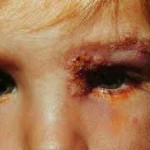 Neonatal herpes simplex virus infection  may also result to ocular HSV like keratitis. As treatment, it should be treated with a topical ophthalmic solution such as Vidarabine, Iododeoxyuridine, and Trifluridine. An ophthalmologist should be in touch for questions and evaluation. Acyclovir could still be used here as suppression treatment.
Neonatal herpes simplex virus infection  may also result to ocular HSV like keratitis. As treatment, it should be treated with a topical ophthalmic solution such as Vidarabine, Iododeoxyuridine, and Trifluridine. An ophthalmologist should be in touch for questions and evaluation. Acyclovir could still be used here as suppression treatment.
4. Survival and death
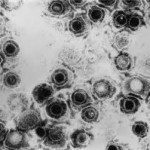 For a disseminated neonatal herpes simplex virus infection, there is about 29 percent mortality rate. The infant develops lethargy, acute liver failure, severe hepatitis, coma, pneumonitis, prematurity, and disseminated intravascular coagulopathy.
For a disseminated neonatal herpes simplex virus infection, there is about 29 percent mortality rate. The infant develops lethargy, acute liver failure, severe hepatitis, coma, pneumonitis, prematurity, and disseminated intravascular coagulopathy.
5. CNS
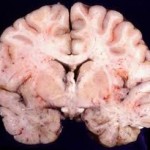 If the CNS is affected by the neonatal herpes simplex virus infection, a year’s mortality rate is about four percent. There is evidence of seizures, near-coma, and prematurity for the affected infants. About 30% of the survivors have normal development of the CNS.
If the CNS is affected by the neonatal herpes simplex virus infection, a year’s mortality rate is about four percent. There is evidence of seizures, near-coma, and prematurity for the affected infants. About 30% of the survivors have normal development of the CNS.
6. Mouth, skin, and eye conditions
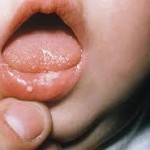 It is rare for those who have neonatal herpes simplex virus infection with these conditions to experience mortality.
It is rare for those who have neonatal herpes simplex virus infection with these conditions to experience mortality.
7. Recurrence (cutaneous)
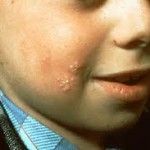 About 50% of the infant survivors who suffered from neonatal herpes simplex virus infection develop cutaneous recurrence. This may be a lifelong battle from the first six months. This condition is disruptive and debilitating to the patients and those who are close to them. The optimal management of cutaneous recurrence is not yet established. Acyclovir is again used 4-5 times in a day for children and infants. This will reduce the shedding of the lesions and discomfort. The suppressive treatment may be stopped for a while for observation and is no recurrences happened in a year.
About 50% of the infant survivors who suffered from neonatal herpes simplex virus infection develop cutaneous recurrence. This may be a lifelong battle from the first six months. This condition is disruptive and debilitating to the patients and those who are close to them. The optimal management of cutaneous recurrence is not yet established. Acyclovir is again used 4-5 times in a day for children and infants. This will reduce the shedding of the lesions and discomfort. The suppressive treatment may be stopped for a while for observation and is no recurrences happened in a year.
 8. Prevention
 As always, prevention is better than cure. This can be done by proper education, identifying the pregnant women at high risk, avoiding skin or close contact with the affected infants, observing proper hand hygiene, and observing the lesions on the infant. There is still no effective vaccine for neonatal herpes simplex virus infection  so it is really better to follow these precautions.
As always, prevention is better than cure. This can be done by proper education, identifying the pregnant women at high risk, avoiding skin or close contact with the affected infants, observing proper hand hygiene, and observing the lesions on the infant. There is still no effective vaccine for neonatal herpes simplex virus infection  so it is really better to follow these precautions.
9. Management (asymptomatic)
 Those infants who have neonatal herpes simplex virus infection  but are asymptomatic and exposed to the maternal HSV during delivery should undergo prophylaxis and continuous consultation with experts. The caregivers or the parents should be educated enough about the identifiable signs of neonatal herpes simplex virus infection.
Those infants who have neonatal herpes simplex virus infection  but are asymptomatic and exposed to the maternal HSV during delivery should undergo prophylaxis and continuous consultation with experts. The caregivers or the parents should be educated enough about the identifiable signs of neonatal herpes simplex virus infection.
Â
When neonatal herpes simplex virus infection  is highly possible for the infant to acquire, make sure that everything will be done to prevent  contamination within the household. Proper monitoring should also be done so that the right management and interventions could be performed with the help of your doctor. Experts say that it is ideal for the prophylactic acyclovir to be given vaginally more than or about four hours after the membranes have already ruptured. Cultures could be obtained from the infant at 24-36 hours of life.
